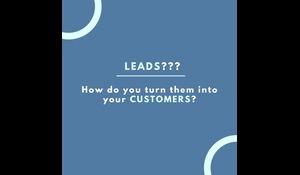Click-Through Rate (CTR) is a pivotal metric in Facebook advertising, serving as a direct indicator of how effectively your ads engage your audience. A higher CTR often correlates with improved ad relevance, better targeting, and more compelling creatives. For media buyers, especially those managing multiple campaigns, understanding and optimizing CTR is essential for maximizing return on ad spend (ROAS) and achieving business objectives.
Understanding CTR in Facebook Ads
What Is CTR?
CTR is the percentage of people who click on your ad after seeing it. It's calculated by dividing the number of clicks by the number of impressions and multiplying by 100. For instance, if your ad received 100 clicks from 1,000 impressions, your CTR would be 10%.
Why CTR Matters
A high CTR indicates that your ad resonates with your audience, leading to more traffic and potential conversions. Conversely, a low CTR may suggest that your ad isn't compelling or relevant enough, which can increase costs and reduce effectiveness.
How Facebook Ads Manager Measures CTR
Facebook Ads Manager provides several CTR metrics to help assess ad performance:
-
CTR (All): Total number of all clicks divided by the number of impressions.
-
CTR (Link Click-Through Rate): Clicks that lead to your website or landing page divided by impressions.
-
Unique CTR (Link Click-Through Rate): Unique clicks divided by reach.
-
Outbound CTR: Clicks that take visitors to your landing page divided by impressions.
-
Unique Outbound CTR: Unique clicks to your landing page divided by impressions.
-
Unique CTR (All): Unique clicks divided by impressions.
Understanding these metrics allows for a more nuanced analysis of ad performance and helps in identifying areas for improvement. KlientBoost
Industry Benchmarks: What’s a Good CTR?
Average CTRs vary across industries:
-
Legal: 1.61%
-
Retail: 1.59%
-
Apparel: 1.24%
-
Beauty: 1.16%
-
Fitness: 1.01%
-
Finance & Insurance: 0.56%
-
Employment & Job Training: 0.47%
These benchmarks provide a reference point, but it's crucial to consider your specific goals and audience when evaluating CTR. WordStream
Factors Influencing CTR in Facebook Ads
Several elements can impact your ad's CTR:
-
Ad Copy: Clear, concise, and compelling text can attract more clicks.
-
Visuals: High-quality images or videos that resonate with your target audience.
-
Targeting: Accurate audience segmentation ensures your ad reaches the right people.
-
Call-to-Action (CTA): A strong, clear CTA guides users on the next steps.
-
Ad Placement: Choosing the right placements can increase visibility and engagement.
Regularly testing and optimizing these components can lead to improved CTR over time.
Strategies to Improve CTR
-
Refine Audience Targeting: Use Facebook's audience segmentation tools to reach users who are more likely to engage with your ad.
-
A/B Testing: Experiment with different ad copies, visuals, and CTAs to identify what resonates best with your audience.
-
Optimize for Mobile: Ensure your ads are mobile-friendly, as a significant portion of users access Facebook via mobile devices.
-
Use Engaging Visuals: Incorporate eye-catching images or videos that align with your brand and message.
-
Craft Compelling CTAs: Encourage users to take action with clear and persuasive CTAs.
-
Monitor and Adjust: Regularly review your ad performance and make necessary adjustments to improve CTR.
Implementing these strategies can lead to more effective ads and better overall performance.
The Relationship Between CTR and ROAS
While a high CTR indicates good engagement, it's essential to consider the quality of traffic. A high CTR with low conversions may suggest that while users are clicking, they're not taking the desired actions on your website. Therefore, it's crucial to align your CTR optimization efforts with conversion rate optimization to maximize ROAS.
Common Mistakes to Avoid
-
Overlooking Mobile Optimization: With a significant number of users on mobile, neglecting mobile-friendly ads can reduce CTR.
-
Ignoring Audience Insights: Not leveraging Facebook's analytics tools can lead to ineffective targeting.
-
Using Generic CTAs: Vague CTAs may not compel users to take action.
-
Neglecting Ad Testing: Failing to test different ad variations can result in missed opportunities for improvement.
Being aware of these pitfalls and proactively addressing them can enhance your ad performance.
Conclusion
CTR is a vital metric in Facebook media buying, reflecting how well your ads engage your audience. By understanding its importance and implementing strategies to optimize it, you can improve ad performance and achieve better business outcomes. Remember, continuous testing, monitoring, and refinement are key to sustained success in Facebook advertising.
FAQs
1. What is a good CTR for Facebook ads?
A CTR of 1% or higher is generally considered good, but it varies by industry and campaign objectives.
2. How can I improve my ad's CTR?
Refine your audience targeting, test different ad creatives, and ensure your CTAs are clear and compelling.
3. Does a high CTR guarantee conversions?
Not necessarily. A high CTR indicates engagement, but conversions depend on factors like landing page experience and offer relevance.
4. How often should I monitor my ad's CTR?
Regular monitoring is essential, especially in the initial stages of a campaign, to make timely adjustments.
5. Can CTR affect my ad costs?
Yes, a higher CTR can improve your ad's relevance score, potentially lowering your cost per click.
Quick Takeaways
-
CTR is a key indicator of ad engagement and effectiveness.
-
Optimizing CTR involves refining ad copy, visuals, targeting, and CTAs.
-
Regular testing and monitoring are crucial for continuous improvement.
-
Align CTR efforts with conversion goals to maximize ROAS.
-
Avoid common mistakes like neglecting mobile optimization and ignoring audience insights.
Looking at overall business profitability? Check out our guide on how to maximize ROI with Facebook marketing.
Want expert help optimizing your Facebook Ads or crafting a data-driven marketing strategy that delivers real ROI?
👉 Let’s talk! I’ll help you plan, launch, and scale your campaigns for maximum results.
📬 Contact me here — let’s grow your numbers, not just your budget.
%20(1)-1.webp?width=103&height=60&name=EGKs%20portfolio%20(400%20x%20391%20px)%20(1)-1.webp)



